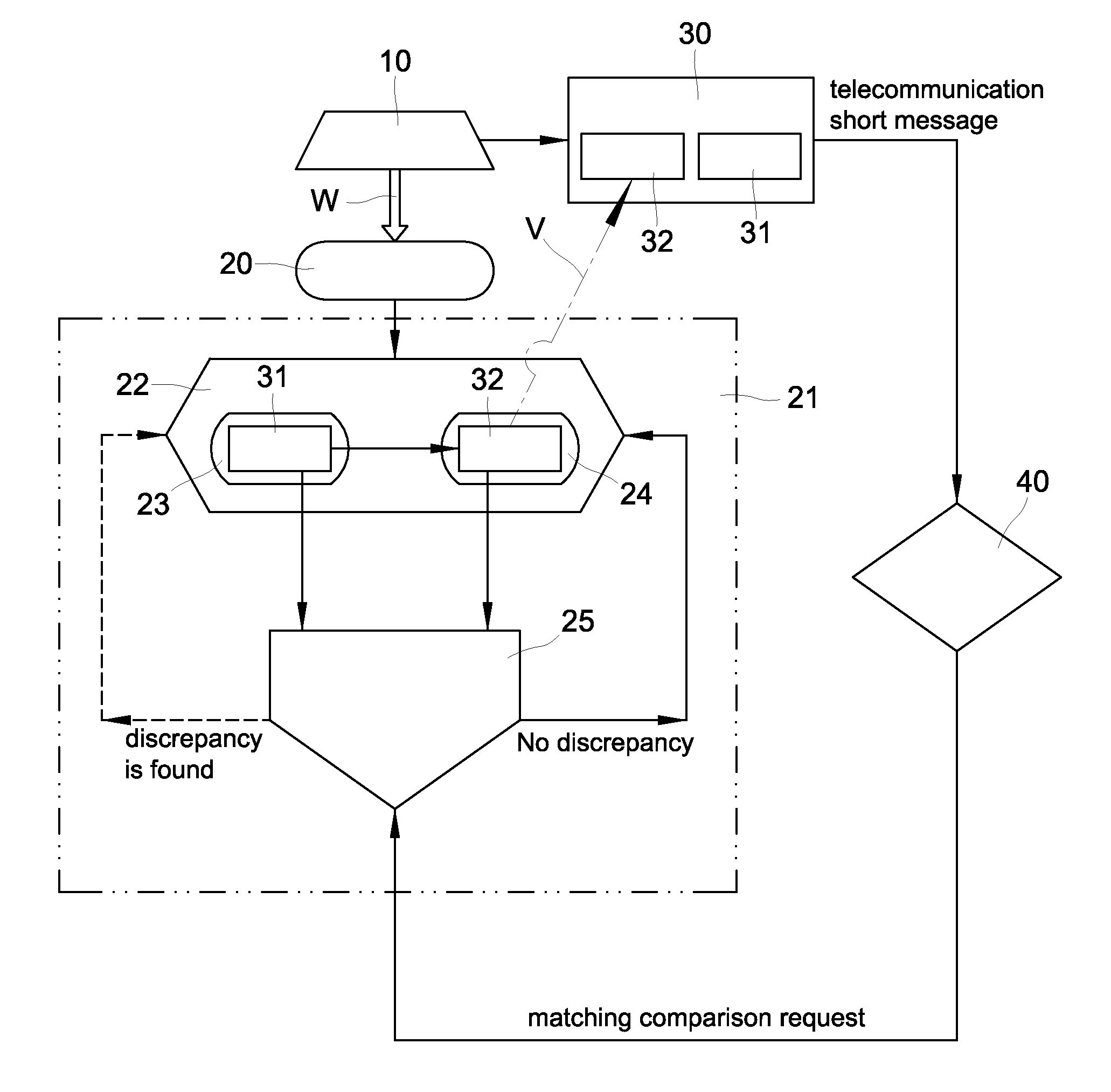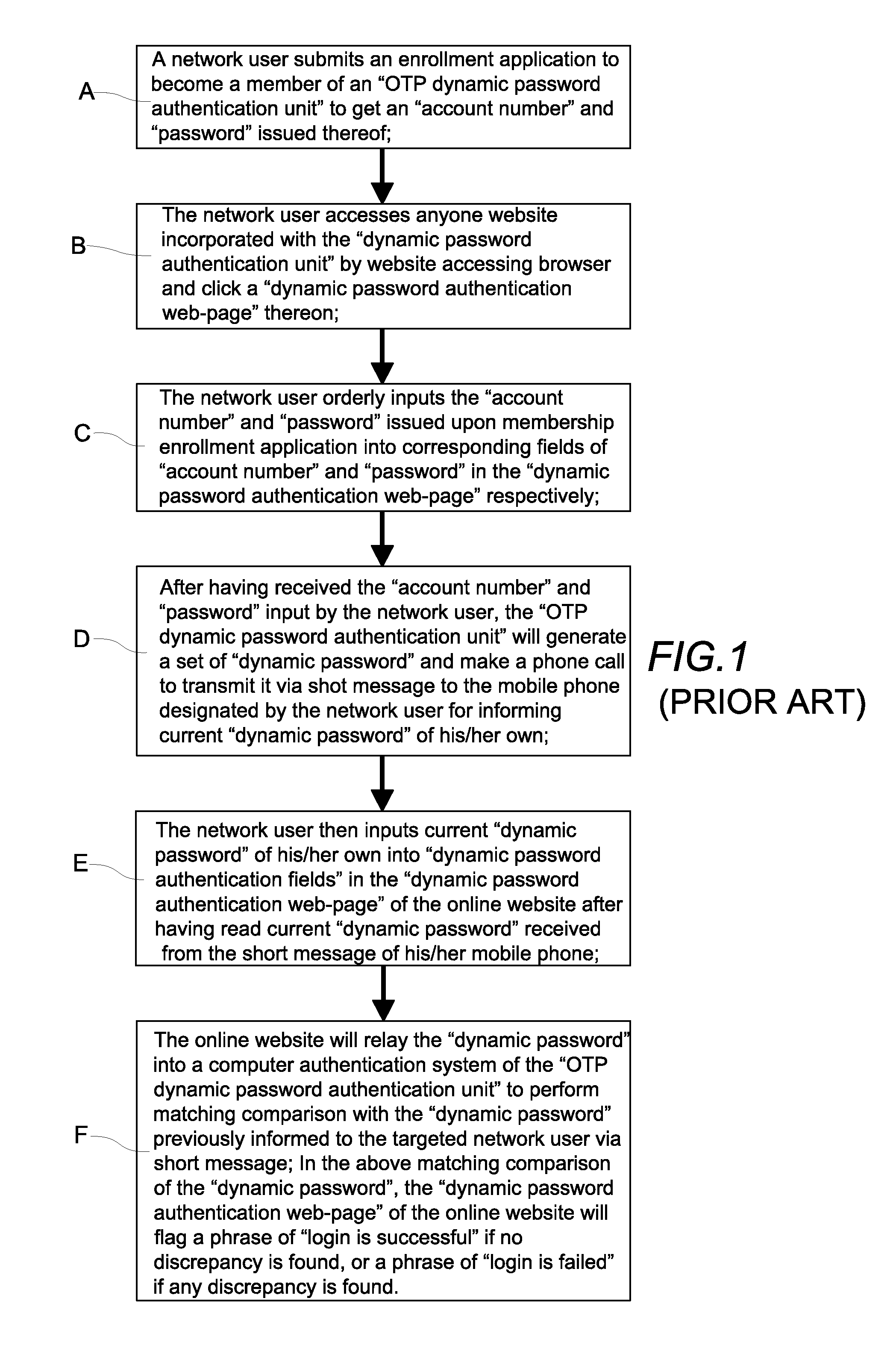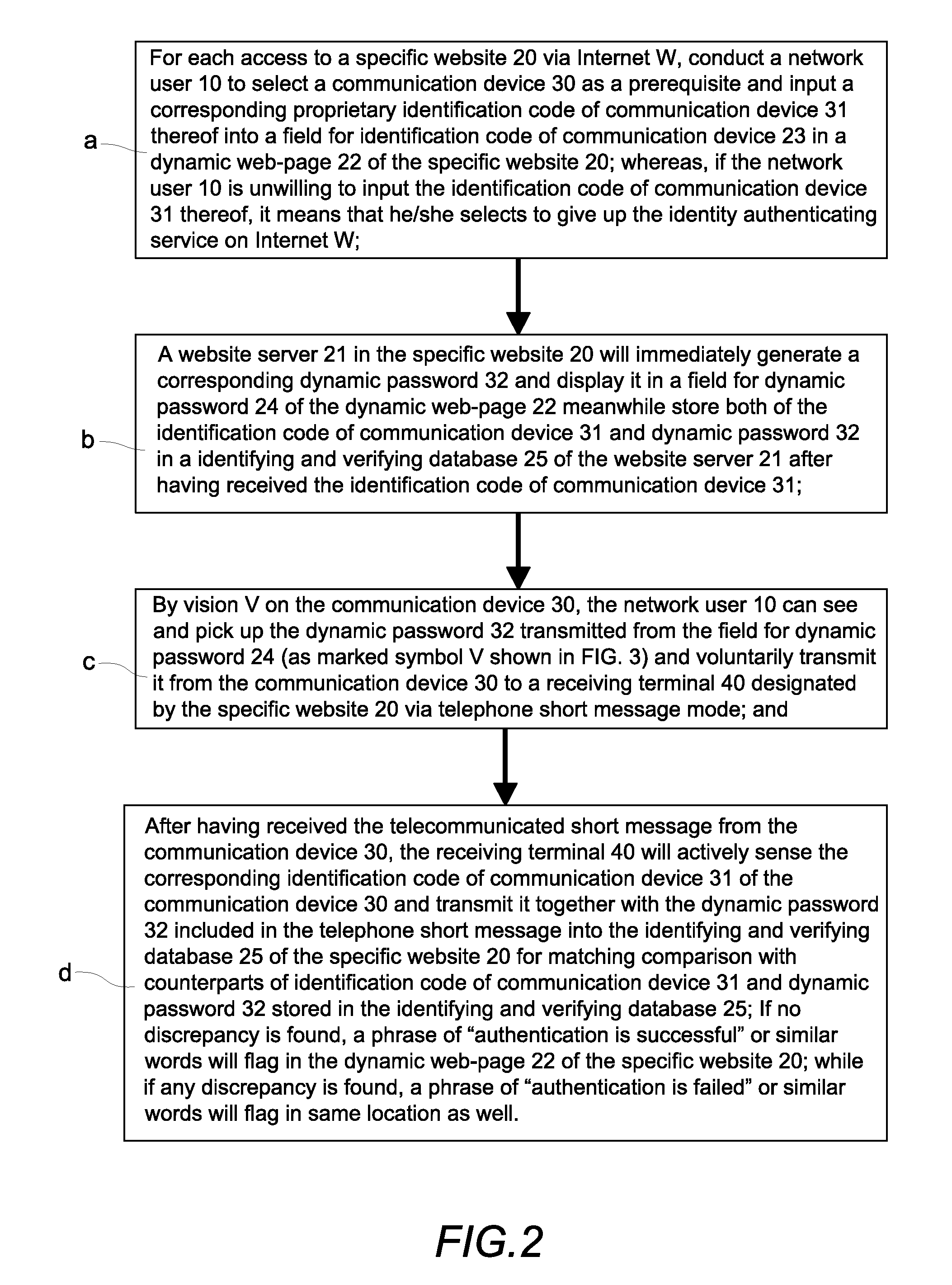However, at the same time, malicious disruptive behaviors or sabotage by cyber hackers has also become more prevalent.
For example, the
Trojan horse may be used to steal password information, make a
system more vulnerable to future unauthorized entries, or simply destroy the programs or data on a hard disk.
Wasting the computer's storage space; and crashing the computer.
If a potential intruder manages to
record an OTP that has already been used to log into a service or to conduct a transaction, he or she will not be able to abuse it since it is no longer valid.
As a result, even when a
hacker successfully intercepts a used OTP, he / she cannot reuse the invalid used OTP or forecast a next valid new OTP to jeopardize the targeted Internet user.
1.
Accessibility of cellular phones to the Internet has increased, making the dynamic password sent to the cellular phone more vulnerable. The first cellular
virus “Cabir” and second cellular
virus “CommWarrior” were created in June, 2004 and January, 2005 respectively. The “Cabir”
virus causes an infected cellular phone to search and connect to a
Bluetooth-enabled cellular phone nearby and send information to the connected cellular phone continuously, draining the battery as it keeps on seeking other
Bluetooth connections. The “CommWarrior” virus is a cellular phone virus capable of replicating via
Multimedia Messaging Service messages (MMS), which are text messages with images, audio or video data to be sent from one phone to another or via email. Before the arrival of “CommWarrior,” cellular phone viruses only spread over
Bluetooth, and thus only nearby cellular phones were to be affected, but the “CommWarrior” (MMS) virus can affect all the cellular phones and potentially spread as quickly as an email worm, results in expensive losses caused by continuous short message sending by the infected cellular phones. In July, 2007, the Spanish police bureau arrested the
hacker, a man of 28 years of age, who created “Cabir” and “CommWarrior.” There are over 115 thousand Symbian based smart phones affected by these two viruses.
Even worse, this kind of
malware can copy or delete critical information such as a personal
address book, short messages, calendar,
bank account details, passwords and the like silently so that the user is not aware of it at all.
The problem is that the expense for the short message is charged to an
Internet Service Provider (ISP), which cooperates with the “OTP dynamic password authentication unit,” and that, accordingly, the
Internet Service Provider (ISP) is liable not only for the expense of normal short messages but also the extra expense of abnormal or invalid short messages incurred by
malware issued from competitors and hackers.
3. Another problem is that, as described in the above step D, when the “OTP dynamic password authentication unit” generates a set of “dynamic passwords” and makes a phone call to transmit it via short message to the cellular phone designated by the Internet user, the OTP transmission uses the MT (Mobile Terminated) Mode, which is not guaranteed to be a real time and
successful transmission, and can lead to a fatal authentication
delay and / or mistake.
4. Furthermore, as described in the above step D, because the “OTP dynamic password authentication unit” generates a set of “dynamic passwords” and makes a phone call to transmit it via short message to the cellular phone designated by the Internet user, the Internet user must be in the status of receiving the “OTP short message” from anyone at anytime, which leads to a new fraudulent crime of “OTP short message
phishing,” in which the attacker constantly sends a fraudulent “OTP short message” to the victim constantly and causes the victim to
panic, thinking that his / her Internet account or banking account is under
attack.
5. Finally, yet another problem with use of short messaging to transmit dynamic passwords has to do with tampering with the caller ID function of the telephone display.
Ever since the Internet and the Public Switched
Telephone Network (PSTN) have been interlinked together, most telephone frauds can be done by
malware propagation via the Internet, in which hackers associate with fraudulent phone call gangsters to remotely fiddle with the “Caller ID” in the telephone display to cause the call to appear to be from a legitimate telecommunication company, law court,
bank, procurement office or the like of a government agency, causing victims to let down their guard and install malware arranged to cheat the targeted victims and perform telephone fraud.
Such telephone fraud happens again and again, and is getting worse to the point where it is becoming an overwhelming situation.
 Login to View More
Login to View More  Login to View More
Login to View More 


